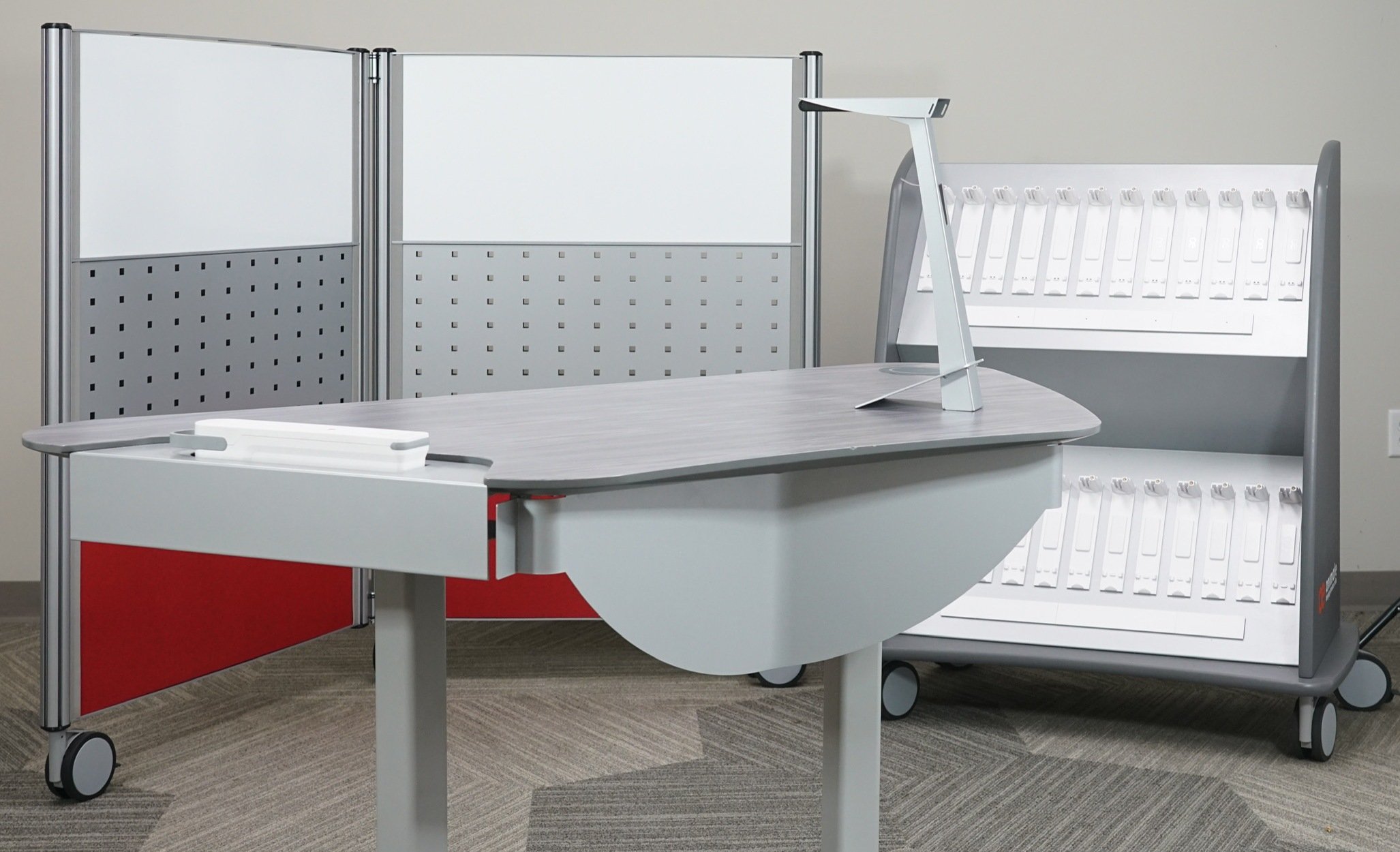Keep the Lights On
Shown on the right in this photo is a 24-position battery charging center, part of the Respond! office furniture system.-the necessary link between your building’s AC electrical system and your battery-powered workstations and equipment.
The California Energy Commission (CEC) recently issued a Request for Information (RFA) asking the public and others for information regarding technical advancements that could assist with the shortfall in energy supply that California is facing. In energy-speak, this topic is known as “resource adequacy”.
While asking is an annual legislative mandate, the request takes on more meaning this year as it has been suggested that the Diablo Canyon Nuclear Power Plant continue to operate for several more years.
There has been a substantial public outcry about this proposal as the plant is in need of repairs and sits atop three fault lines along the Central Coast Area of California.
August Berres has replied to the RFA outlining how point-of-use battery systems such as ours can provide resource adequacy including the ability to enable DC microgrids in commercial buildings. It is estimated that a DC-powered building is 1/3 more efficient than an AC-powered building.
Our response is a matter of public record and can be viewed HERE. We offer 5 actions the CEC could take and highlight the efforts of the EMERGE Alliance to create worldwide standards for local and building microgrids. We endorse the efforts of the Emerge Alliance and all our products conform to their standards.
More power generation is not the only way to supply power during peak-demand times on the grid. Batteries, charged during off-peak hours and discharged during peak hours, are a cost-effective way to address the resource adequacy issue.
What is Resource Adequacy?
“Resource Adequacy” is an ongoing discussion topic in the California energy community. A better term for the discussion might be “Resource Inadequacy” because that is the real problem.
In addition to the efforts of the CEC, the California Public Utilities Commission, (CPUC) is striving to meet a goal of 15% capacity above anticipated needs. California’s Community Choice Aggregators (CCAs), entities enabled by the California legislature to accelerate the conversion to clean energy that now serves the greater portion of the state, are not meeting the goals. Last year, almost every CCA was approved for a waiver of this requirement because they were unable to secure enough generation, despite best faith efforts. And power shutdowns are becoming more common as the shortfall is felt by consumers.
Actions have been taken. In 2020, the CPUC, over the objections of the CCAs, directed PG&E and Southern California Edison (the two biggest investor-owned utilities) to take over the power procurement responsibilities that were previously the domain of the CCAs. Also, in March of 2021, electric rates for peak demand hours were substantially increased.
Those applying for permits to build solar generation are now also asked to incorporate large battery arrays alongside their solar plants.
Why batteries?
Batteries allow power generation to be time-shifted
Residential rooftop solar has an impact. The growth of home solar has shifted peak demand to later times of the day. Since rooftop solar performs best at midday, much of the early afternoon residential demand has been reduced. Peak demand is now later in the day when solar generation is declining. By adding batteries to the system, some of the solar-generated midday energy can be stored for use later in the day.
This is a start, but as we noted in a previous post, there is a lot of energy lost when a series of inverters, step-up transformers, step-down transformers, and power supplies are incorporated into the transmission and distribution grids.
The grid-friendly solution
Solar combined with batteries at the point of use is a best practice
Avoiding energy losses is why local and building microgrids are the best solution. And why we are so enthused about incorporating battery power into our office system product., Respond!.'
Backup generator power systems are not inexpensive. Not every business can afford the investment. Furthermore, most of these systems serve an entire facility. In times of crisis, it may be that not every circuit or device in a building really needs to be operating. But large generating systems usually cannot make that distinction, at least not without another investment in a facility power distribution system.
We favor lean thinking. point-of-use batteries are a better, and more economical approach.


